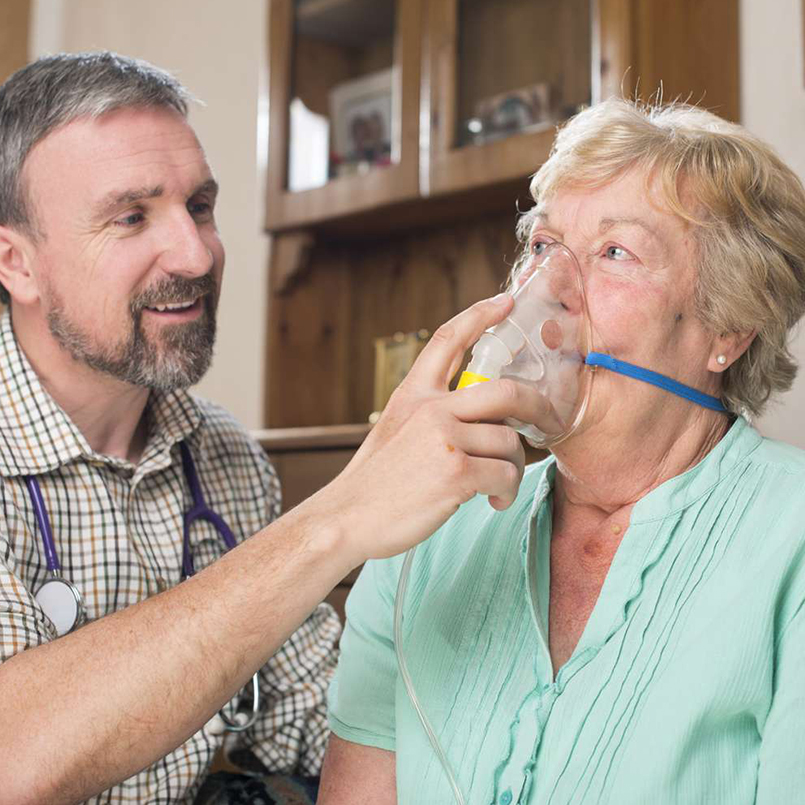What is hypoxemia?
Hypoxemia is a condition in which blood oxygen reaches less than 92%, and this condition is considered a type of respiratory failure. Hypoxemia is not a disease, but a sign of a respiratory problem or disease. This decrease in oxygen level has symptoms such as shortness of breath or rapid breathing, and the patient may experience chest pain and bruised lips. In addition to these, the following symptoms may also be observed, which vary depending on the severity of hypoxemia:
– Headache – Dizziness – Wheezing – Cough – Bruising of the skin and nails.

What is the cause of blood oxygen reduction?
A decrease in the blood oxygen level occurs due to various reasons, but generally, hypoxemia is caused by diseases that affect breathing and blood flow. For example, people who have cardiovascular diseases and their blood flow may be disturbed, may experience hypoxemia. Also, some drugs affect breathing and slow it down and reduce blood oxygen levels.
One of the most common diseases that causes a decrease in blood oxygen is sleep apnea, in which the patient’s breathing is repeatedly interrupted during sleep, which eventually causes the blood oxygen to decrease and not enough oxygen to reach the brain. It should be noted that sleep apnea can be improved with CPEP and BIPEP breathing aids, which are derivatives of ventilators. The following can cause a decrease in blood oxygen:
– Exposure to high altitudes – Anemia – Respiratory distress syndrome or ARDS – Asthma – Bronchitis – Pulmonary hypertension – Pulmonary embolism – Pulmonary edema or accumulation of fluid in the lungs – Emphysema – Pneumonia – Chronic obstructive pulmonary disease or COPD – Congestive insufficiency the heart
How to measure blood oxygen:
In order to measure blood oxygen, two methods are used: – Blood test: In this test, which is called ABG or arterial blood gas, a blood sample is taken from the patient, usually using a lancet or a special needle from the fingertip. It is taken and does not cause much pain for the patient. This test is highly accurate and shows the blood oxygen level correctly, but it takes time and the patient needs to go to the laboratory.
– Pulse oximeter device: the use of this device is very common nowadays. This device, which has a relatively low price, measures blood oxygen within a few seconds by being placed on the patient’s finger. It is possible to use pulse oximeter at home and in medical settings and in many cases it is an alternative to blood test because it saves time and money.

Pulse oximeter function:
Pulse oximeter, which is also called finger oxygen meter, is a small and light device that is portable and works non-invasively and only in surface contact with the skin, and does not cause any pain or discomfort to the patient. In addition to the finger, the clip of this device can be placed on the tip of the nose and earlobe because these parts have pulsating arterioles and show the blood oxygen level well.
At the top of the pulse oximeter probe is a diode that emits red light with a wavelength of 600 nm and infrared light with a wavelength of 930 nm to the skin. As these lights pass through body tissues and arteries, red light is absorbed by hemoglobin and infrared light is absorbed by oxyhemoglobin (hemoglobin that carries oxygen). The unabsorbed light exits the other side of the tissue and goes to the lower probe. By processing these rays, it is shown what percentage of hemoglobin molecules have oxygen in relation to the total blood hemoglobin molecules. Therefore, the blood oxygen level is measured.
Use of pulse oximeter to measure blood oxygen:
When using this device, as well as when buying a pulse oximeter, you should pay attention to the accuracy of its measurement. Since the accurate measurement of blood oxygen is vital, the accuracy of the device needs to be about 2%. To use it, it should be noted that cold or wet finger, nail polish, thick skin and also the use of nicotine can affect the measurement results.

Treatment of low blood oxygen:
After detecting the low blood oxygen level and measuring the blood oxygen level, the doctor diagnoses the patient’s problem and may prescribe the necessary drugs such as respiratory spray or tablets or injectable drugs. But at the beginning of the treatment, it is necessary to give oxygen therapy to the patient, which will increase the blood oxygen level and reduce the patient’s symptoms. It also makes the patient breathe better and feel better. For this purpose, two oxygen capsules and oxygen generators are used. These devices may be used throughout the treatment for the patient. Also, some patients need to use this equipment permanently.

